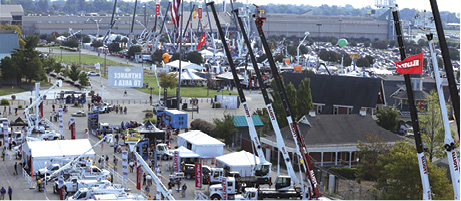Entertaining Efficiency
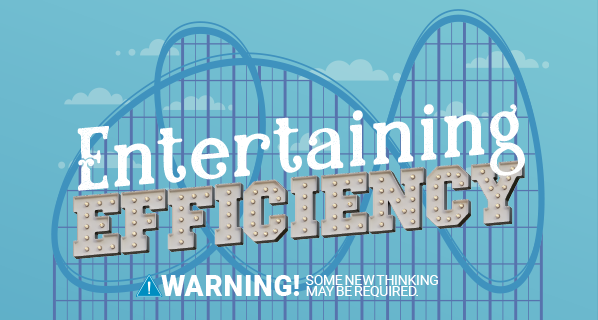
By Dan Helgerson.
Warning! Some new thinking may be required.
I have a friend who was the sales manager for a company in an area where there are several large amusement parks. Many of the rides within these parks employ sophisticated hydraulic systems to provide exciting experiences for the people who have come to be “amused”. Some of these rides lift people high in the air, spin them around, or toss them back and forth. Some include a visual experience with electronically controlled hydraulic motion platforms that cause the customers to “feel” what is being seen on the screen.
These rides are inherently inefficient. At the end of the ride, when the door opens, or the bar lifts, the customers exit at the same location where they entered. Even though there was an experience of traveling on a remarkable journey, in reality, the customers went nowhere. All cylinders had returned to their at-rest position. No lasting work had been done. Most of the energy that went to operate the system had to be dissipated as heat. There is usually no complaint about wasted energy because it is simply the accepted cost of being entertained.
The companies that manage these amusement parks are very concerned about customer and employee safety. The more exciting the ride, the more likely it is that there will be a higher risk involved. The people who design and build the hydraulic systems that make the rides possible must include adequate safety measures to prevent injury to people or equipment.
An amusement park with one of these remarkable rides was a client of my friend. The hydraulic system included accumulators that helped operate the ride and provided auxiliary power that could return every actuator to a safe position if electrical power was lost.
The system included four 200 liter (53 gallon) accumulators with a minimum operating pressure of 12 MPa (1740 psig) and the accumulators had a maximum pressure of 21 MPa (3045 psig). They were pre-charged to 9.6 MPa (1400 psig). Under these conditions, the available volume would be about 34% of the accumulator volume, which would be 273 liters (72 gallons). 45% of the stored volume, 123 liters (32.5 gallons) was the maximum amount of fluid needed to fill the cylinders. Another 45% was reserved for emergency use.
However, the safety engineers wanted to increase the margin of safety and asked to increase the emergency volume by 50%, but there was no room in the building that housed the hydraulic system for more accumulators. My friend was tasked with finding a solution.
Here is an equation you might want to add to your toolbox.

%V is the percentage of an isothermic accumulator volume that will be available when the pressure relationships are known, regardless of the size of the accumulator. p1 is the precharge pressure, p2 is the minimum pressure requirement, and p3 is the maximum pressure of the accumulator.
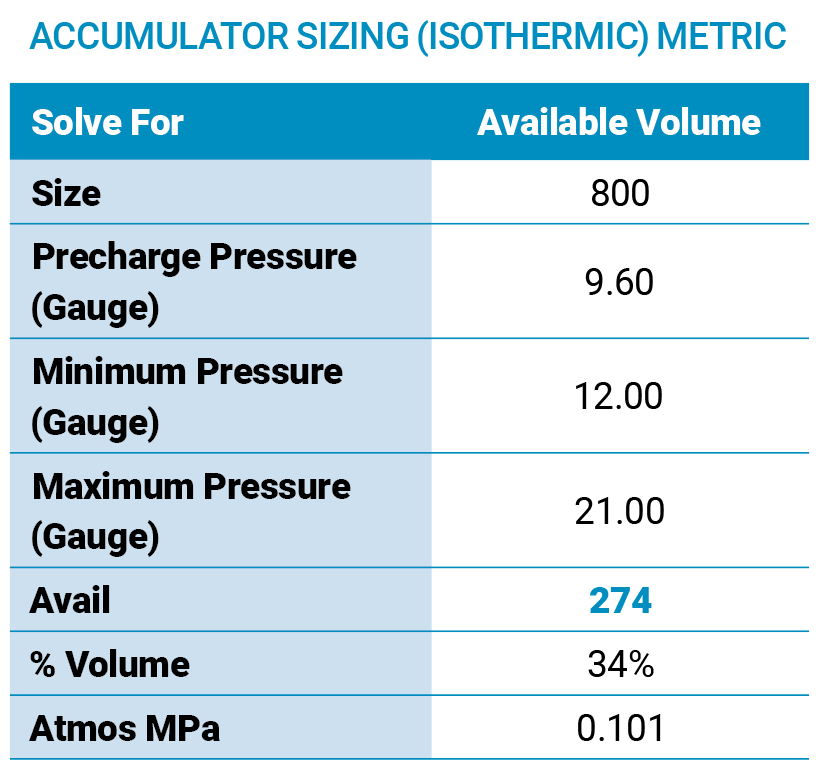
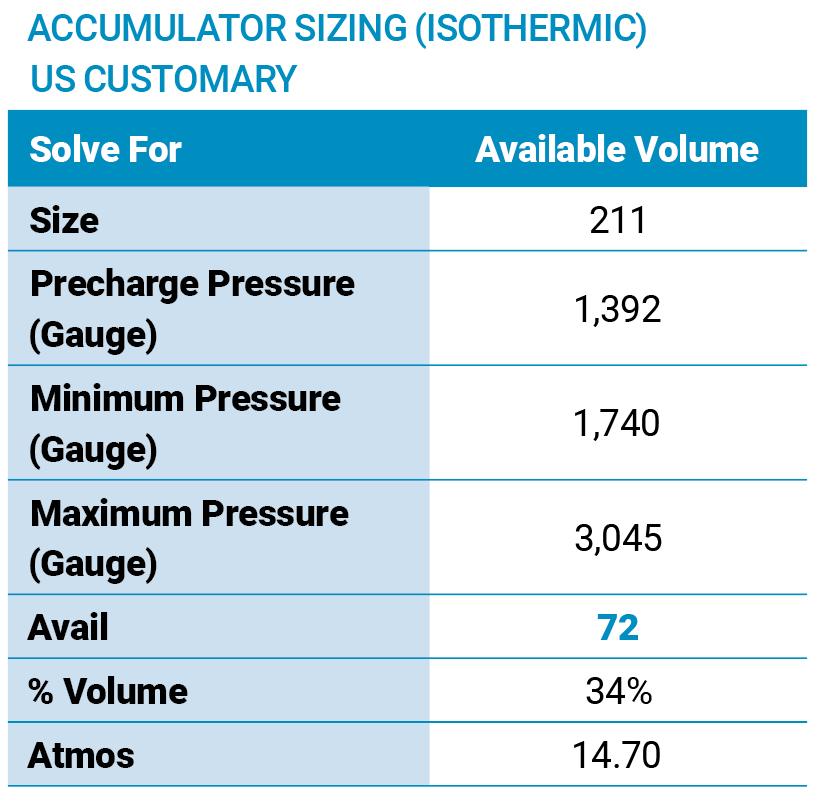
My friend discovered that, by increasing the maximum pressure of the accumulator, he would increase the available volume. He changed the accumulators from those rated to 21 MPa (3045 psig) to ones that are rated to 35 MPa (5075 psig). The existing pumps and electric motors were able to handle the increase in pressure and so there were very few changes needed to the hydraulic circuit.
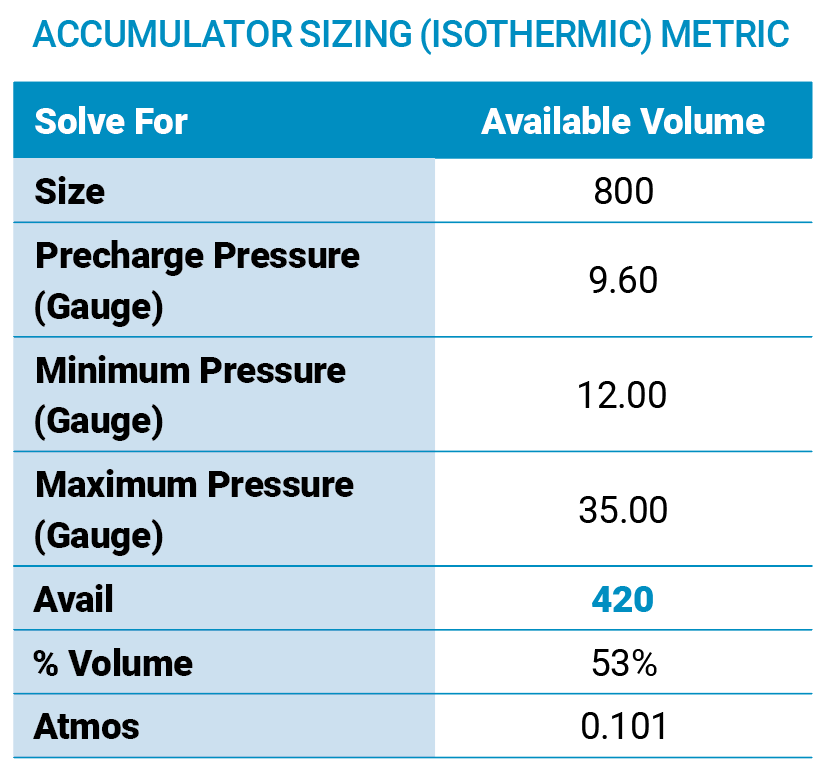
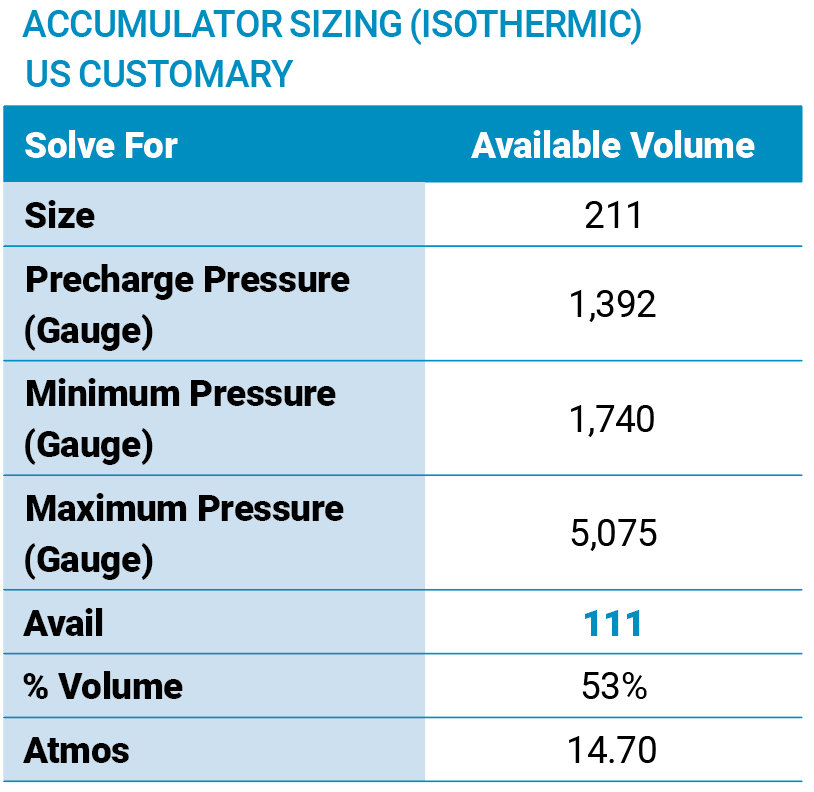
By increasing the accumulator pressure to 35 MPa (5075 psig) he was able to increase the available volume by more than the 50% required (from 34% to 52%) without needing to put an addition on the building. It was deemed a great success.
But was this the best thing for the customer?
Think about this for a moment. Even though we do not have all the details, we can still do some analysis based on the %V in the chart. A new ride begins every 10 minutes. The ride lasts about 6 minutes using 300 lpm (79.25 gpm). It then stops and people get off. Once they are all off, the new customers get on with the exchange taking 4 minutes. Then the ride starts again. In the event of a loss of power, the ride must safely come to rest, requiring 17% of the accumulator volume which is 136 liters (35.9 gallons).
The average flow rate is 300 liters x 6 minutes / 10 minutes = 180 lpm (47.6 gpm). As all the cylinders return to the safe position, the accumulator pressure must not drop below the minimum pressure of 12 MPa (1740 psig). Using the equation:
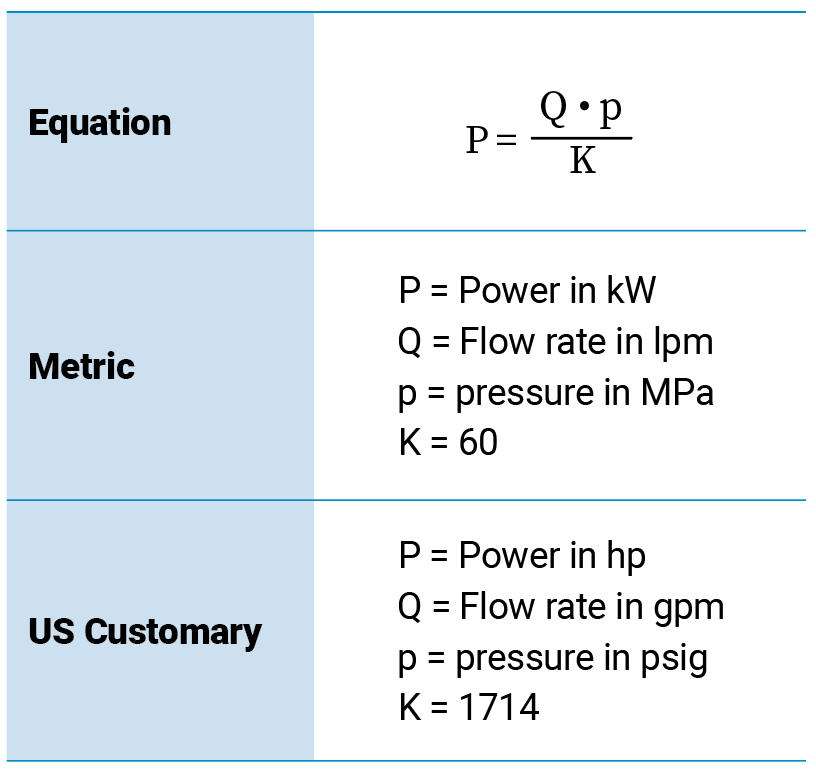
The average power required for the ride is 180 lpm x 12 MPa / 60 = 36 kW (47.6 gpm x 1750 psig / 1714 = 48.6 hp)
The original system maintained at least 123 liters (32.5 gallons) of stored energy to return the whole system to a “rest” position. If the maximum amount of stored volume is 34% of the accumulator volume, then there would never be less than 18.7% remaining for emergency use.
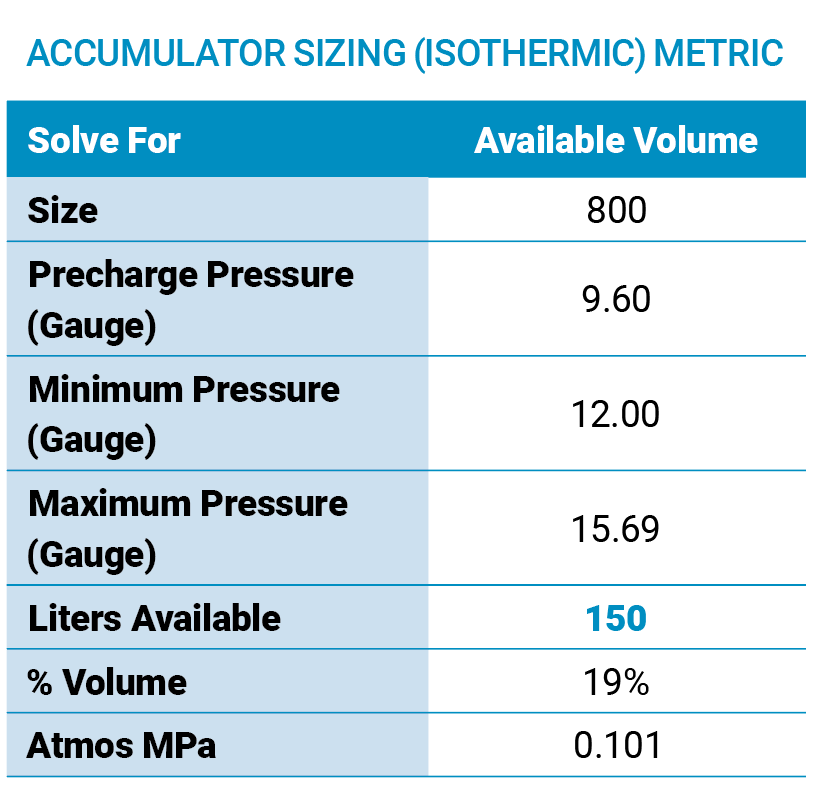

Looking at the chart, we see that the lowest pressure in the accumulator during normal operation would be 15.69 MPa (2275 psig). The average pressure would be midway between the highest and lowest pressures of the working accumulator. (21 MPa + 15.69 MPa) x 0.5 = 18.34 MPa (2660 psig). The average power consumed by the system was 180 lpm x 18.34 MPa / 60 = 55.0 kW (47.6 gpm x 2660 psig / 1714 = 74 hp)
36 kW are needed, but 55.0 kW are consumed. 36 kW / 55.0 kW = 0.65 or 65%. The original system wasted 35% of the energy applied.
Now we can compare the new system. There was no change in the flow rate, only a change in the stored volume. The minimum available volume had to increase by 50% (from 123 to 184 liters). To retain this amount of volume, the pressure would need to be 16.9 MPa (2446 psig).
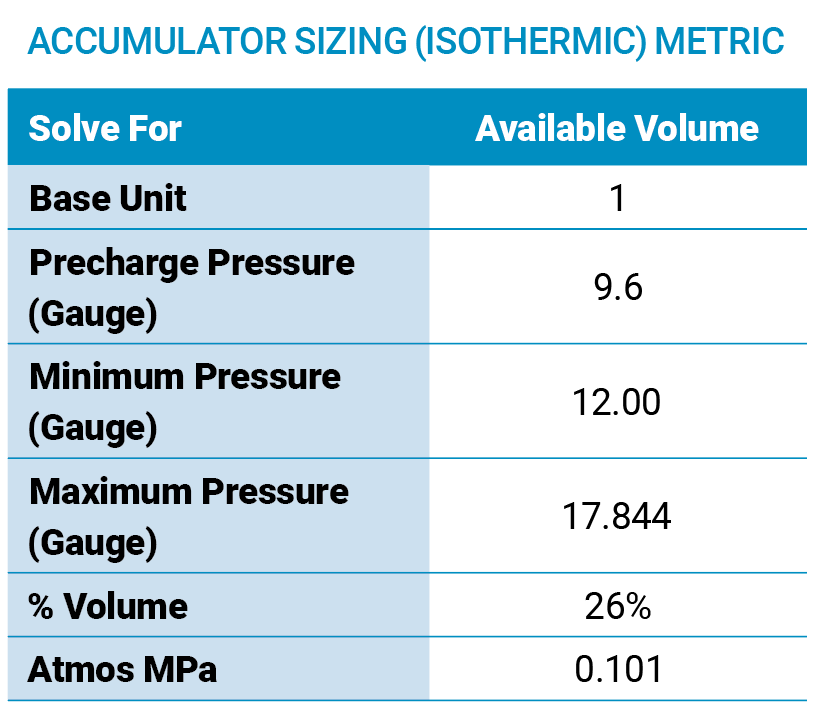
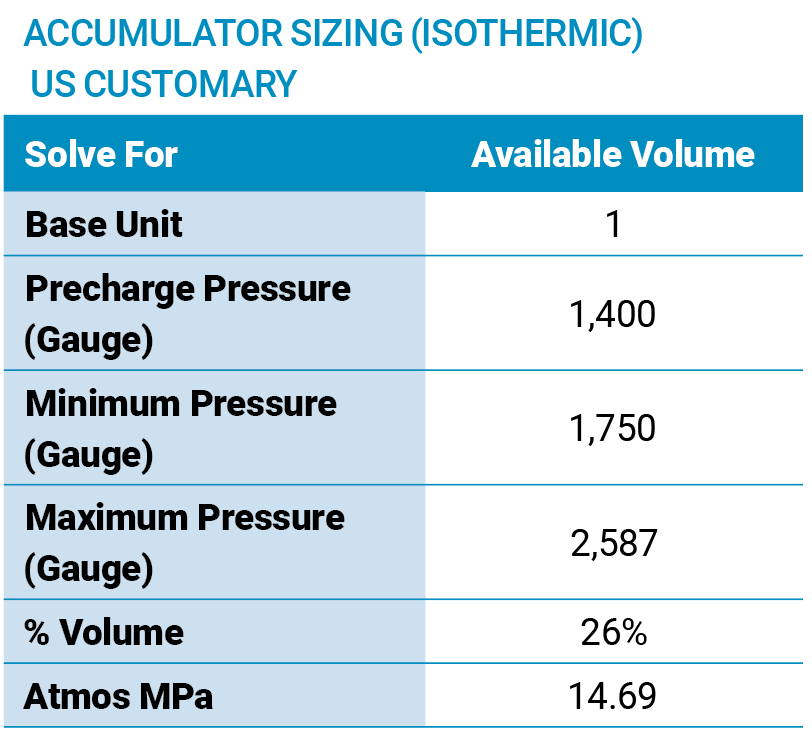
The average pressure will be (16.9 MPa + 35 MPa) x 0.5 = 25.95 MPa (3763 psig). The average power consumed will 180 lpm x 25.95 MPa / 60 = 77.9 kW (47.6 gpm x 3763 psig / 1714 = 104.5 hp).
36 kW are needed, but 77.9 kW are consumed. 36 kW / 77.9 kW = 0.46 or 46%. The new system wastes 54% of the energy, an increase of 54%.
The cost of ownership for the amusement park increased in some other ways as well. The peak load on the motors will bring an increased “demand charge” from the power company. The coolers will require more energy to remove the heat from the system. The heat generated in the hydraulic fluid due to the high pressure drop between the accumulators and the system shortens the life of the fluid. This in turn shortens the life of the hoses and seals, increasing maintenance and repair costs. The high pressure and hot fluid increase the safety hazards for both maintenance workers and customers.
The Solution
We need to ask the right question.
The safety engineers at the amusement park said they needed to increase the available emergency volume from 274 liters to 411 liters. The question that no one asked was how much energy was required.
In the original system, 123 liters at 12 MPa was needed to return the ride to a safe at-rest position. This means that 123 liters must be available at a minimum of 12 MPa or 1,476 l/MPa units of energy (UE). The engineers wanted to increase the requirement to 2,214 UE.
Whoa, whoa! Wait a second! What is all this about “units of energy (UE)?”
Bear with me for a moment. I know, I know; we learned in Hydraulics 101 that “Flow means Go” and “Pressure means Push,” and so we were taught to separate pressure and volume in our thinking and in our designs. A certain amount of pressure is needed to push an actuator. A certain amount of volume is needed to fill the actuator. These are two separate calculations that, when combined, provide the amount of energy needed to move the actuator. The power required is determined by how fast the energy is to be applied.
Stay with me now. An accumulator is a device that stores energy in the form of pressure and volume. This is potential energy and can be defined as units of work. It is not power. Power is produced as the energy is released at a rate of speed. For our purposes, we only need to consider the stored energy as it relates to the work being done.
If there are 100 liters stored at 21 MPa (26.42 gallons at 3,045 psi) there will be the potential energy of 2,100 l/MPa (80,449 in.lb). 10 liters at 210 MPa or 1,000 liters at 2.1 MPa (2.642 gallons at 30,450 psi or 264.2 gallons at 304.5 psi) would have exactly the same potential energy.
Now, back to the problem. In the original system, the amount of potential energy available was 274 liters at 21 MPa (72 gallons at 3,045 psi), which translates in our new way of thinking to 5,754 l/MPa (219,240 g/psi). However, the actual amount of energy needed was 246 liters at 12 MPa (65 gallons at 1740 psi) or 2,952 l/MPa (113,100 g/psi), an excess of 51%.
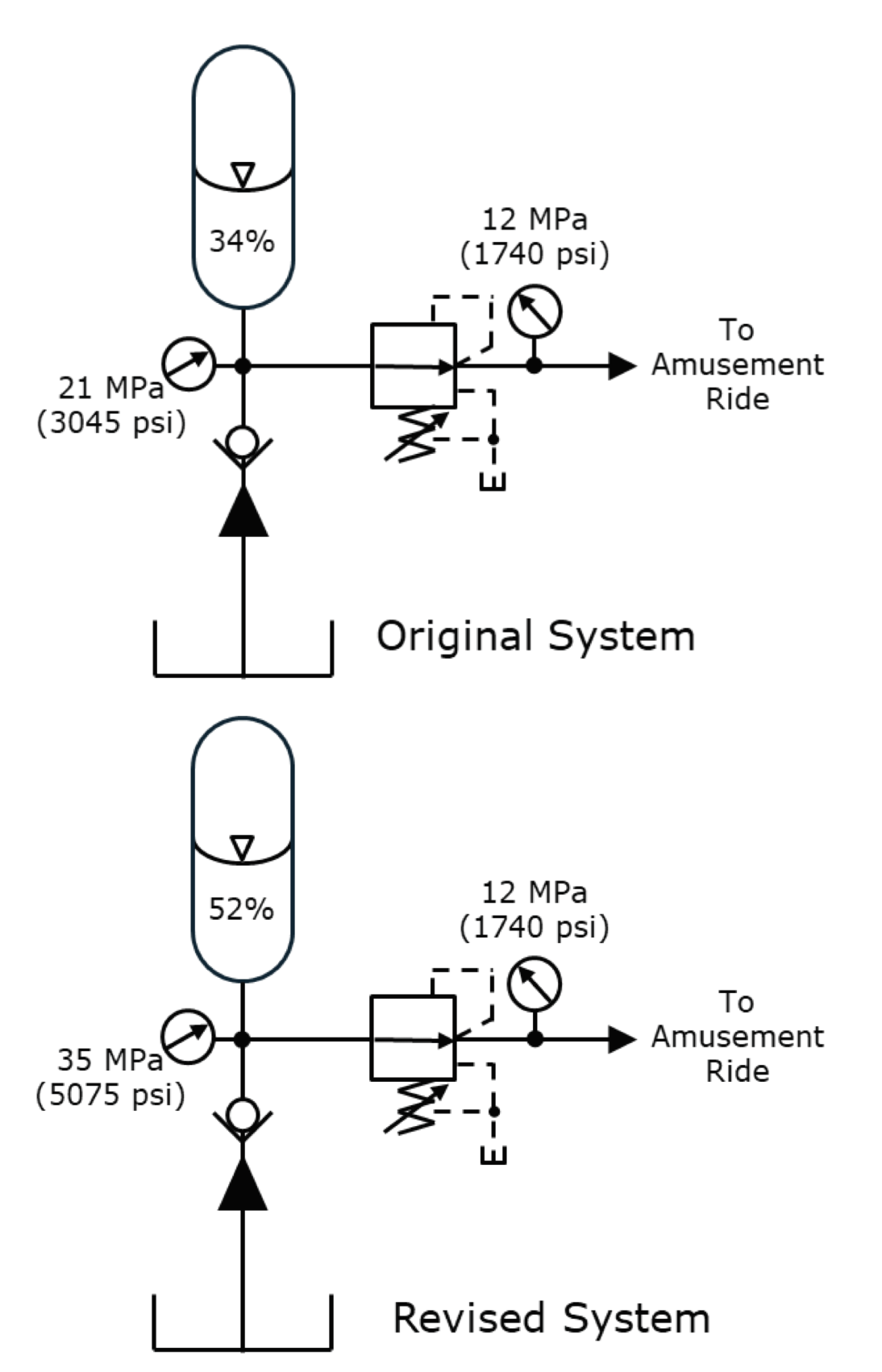
What if it were possible to take all this extra energy and convert it into useful work? It is possible and is very simple.
Enter the Fixed Displacement Power Controller (FDPC). (You probably know it as a rotary flow divider.)
Now hang on, this is going to get weird. We will use the FDPC as a flow augmenter/pressure reducer. It will have two inlet ports and a combined outlet port that will lead to the amusement ride. The inlet to one section will be connected to the accumulators and have a displacement that is twice that of the other section. The smaller section will be ported to the reservoir. The net result is that whatever flow is being directed to the amusement ride, 66.7% will be taken from the accumulator and 33% will be drawn from the reservoir. The pressure leaving the FDPC will be 66.7% of the accumulator pressure.
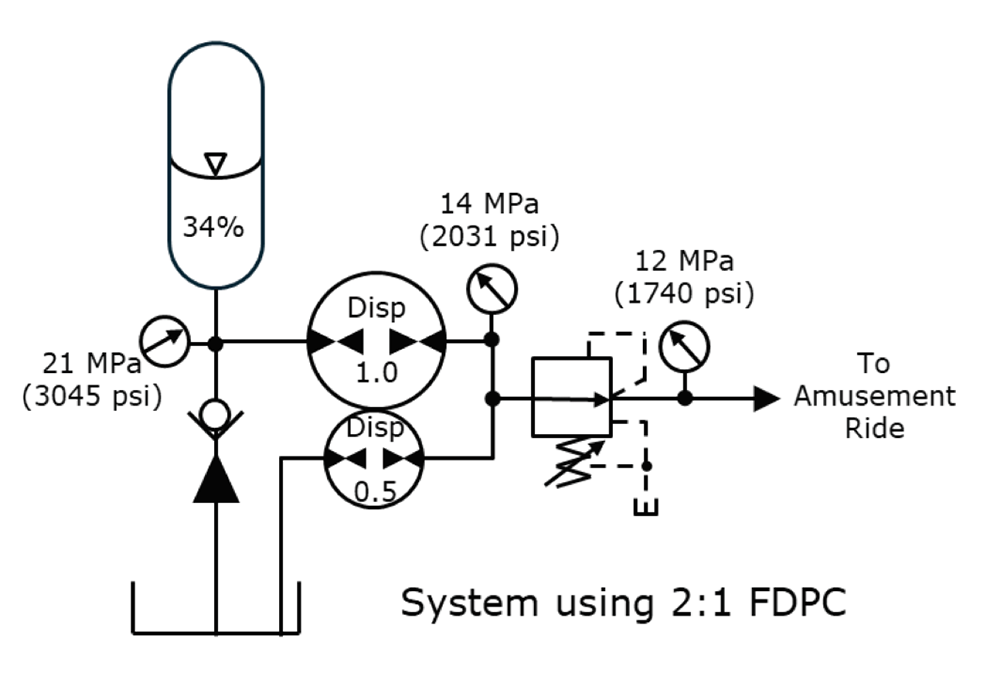
The net result is that the available volume will effectively increase by 50%. 274 liters from the accumulators and 137 liters for a total of 411 liters with an output pressure of 14 MPa. Check it out. 274 liters + 137 liters = 411 liters. 274 liters x 21 MPa = 5,754 l/MPa. 411 liters x 14 Pa = 5,754 /MPa. The amount of energy units is exactly the same.
When all the cylinders are fully extended, 123 of the 411 liters are used but only 82 liters are drawn from the accumulator, leaving 192 liters available for emergency use.
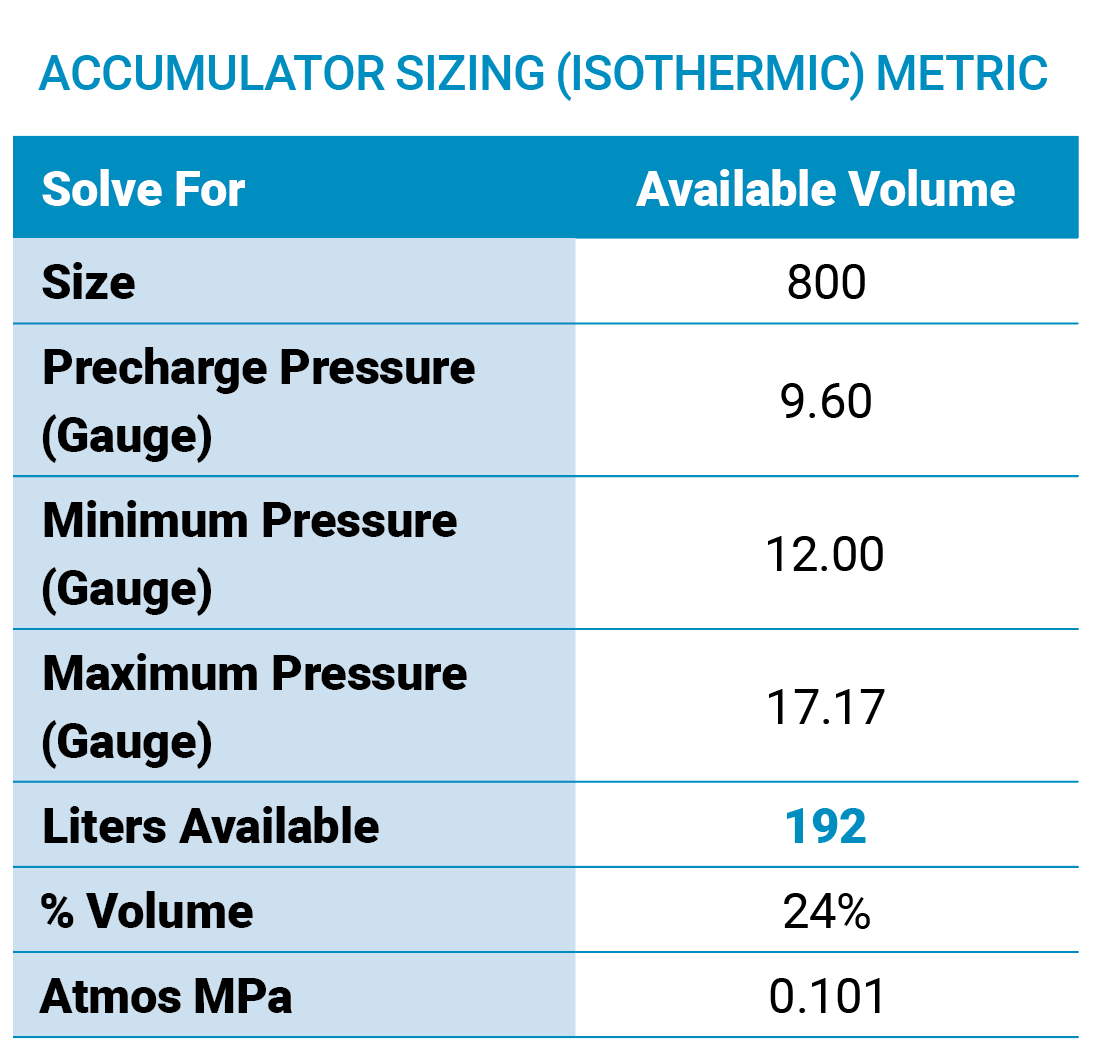
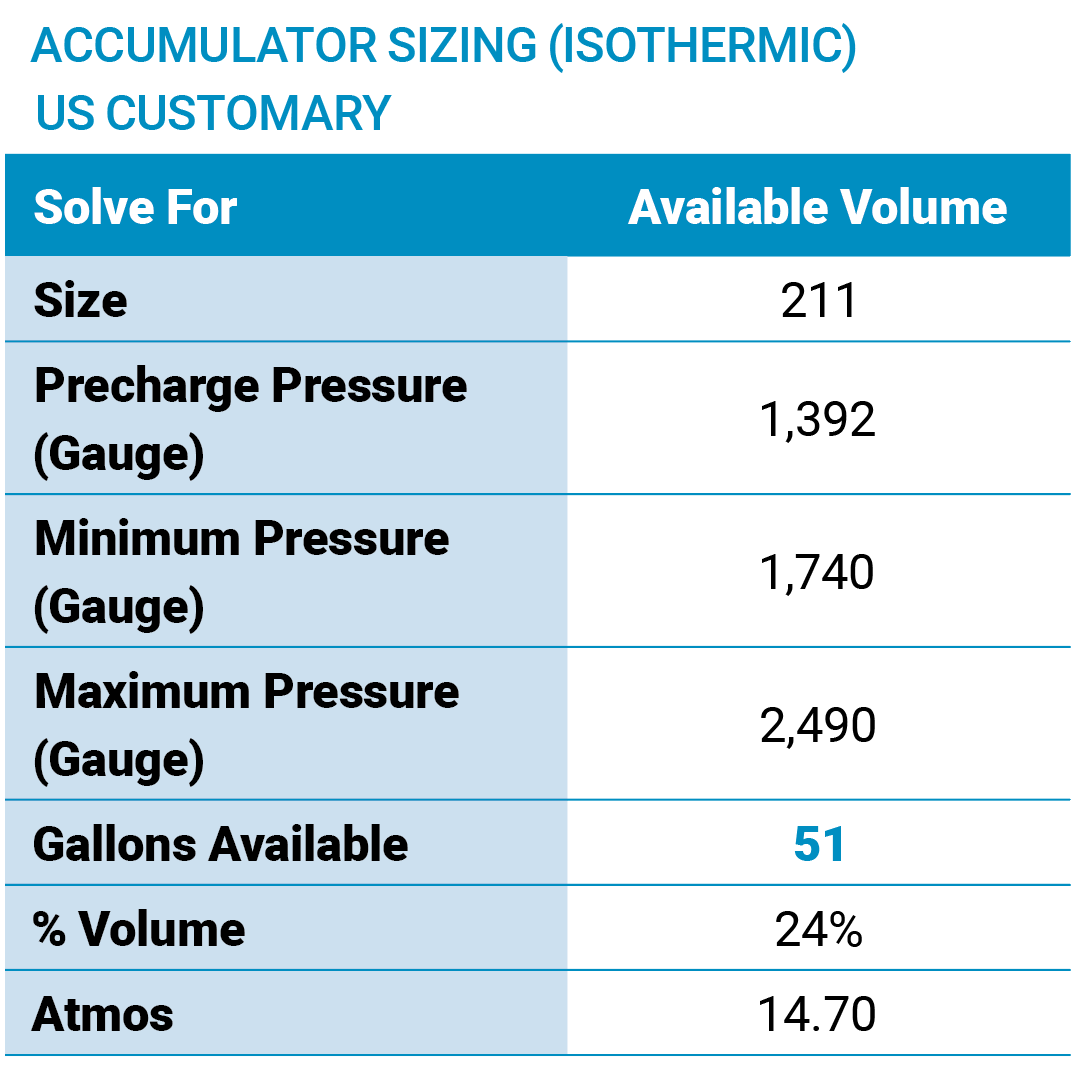
The accumulator pressure drops to 17.17 MPa (2,490 psi). The UE available are now 3,297 l/MPa (126,990 g/psi). 123 liters x 12 MPa or 1,476 metric UE (56,538 US UE) are needed for emergency use. An additional 82 liters (21.7 gallons) will be taken from the accumulator leaving 110 liters at 14.5 MPa (29 gallons 2,102 psi), more than enough to bring the ride to safety.
By thinking in terms of Units of Energy (UE) and rethinking the use of the common Fixed Displacement Power Controller (FDPC), the amusement park could have gained the extra fluid available and saved on their energy bill. The heat load would have dramatically less, reducing damage to the fluid, seals, and hoses.





